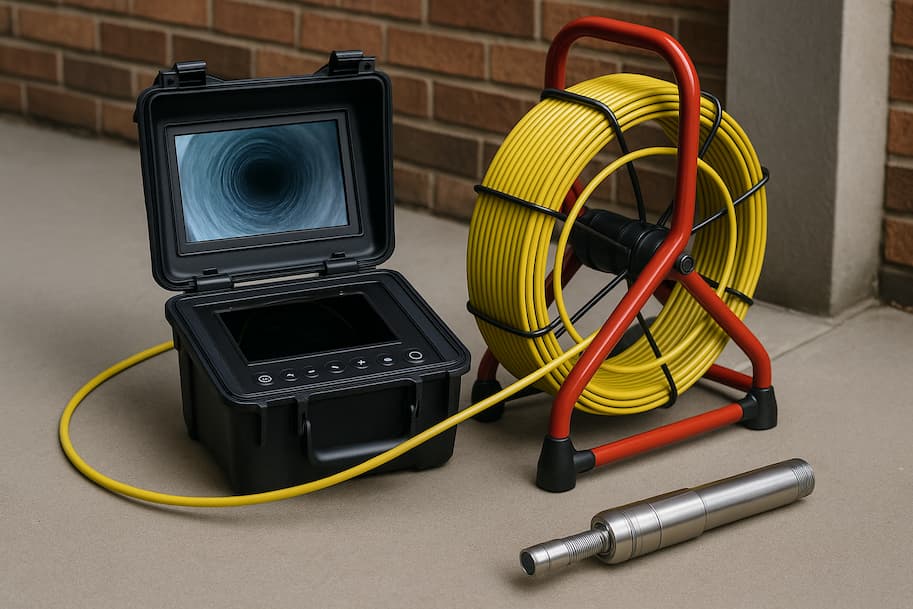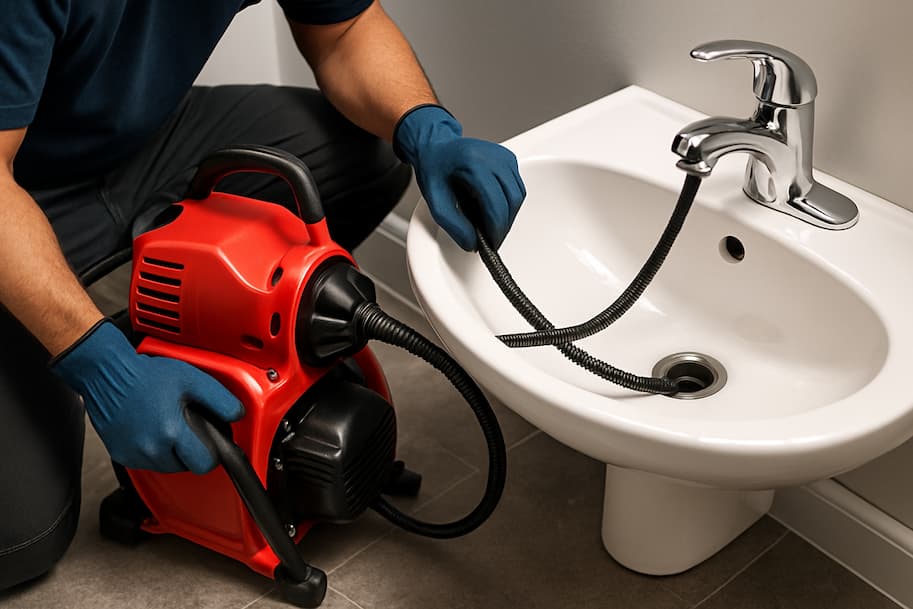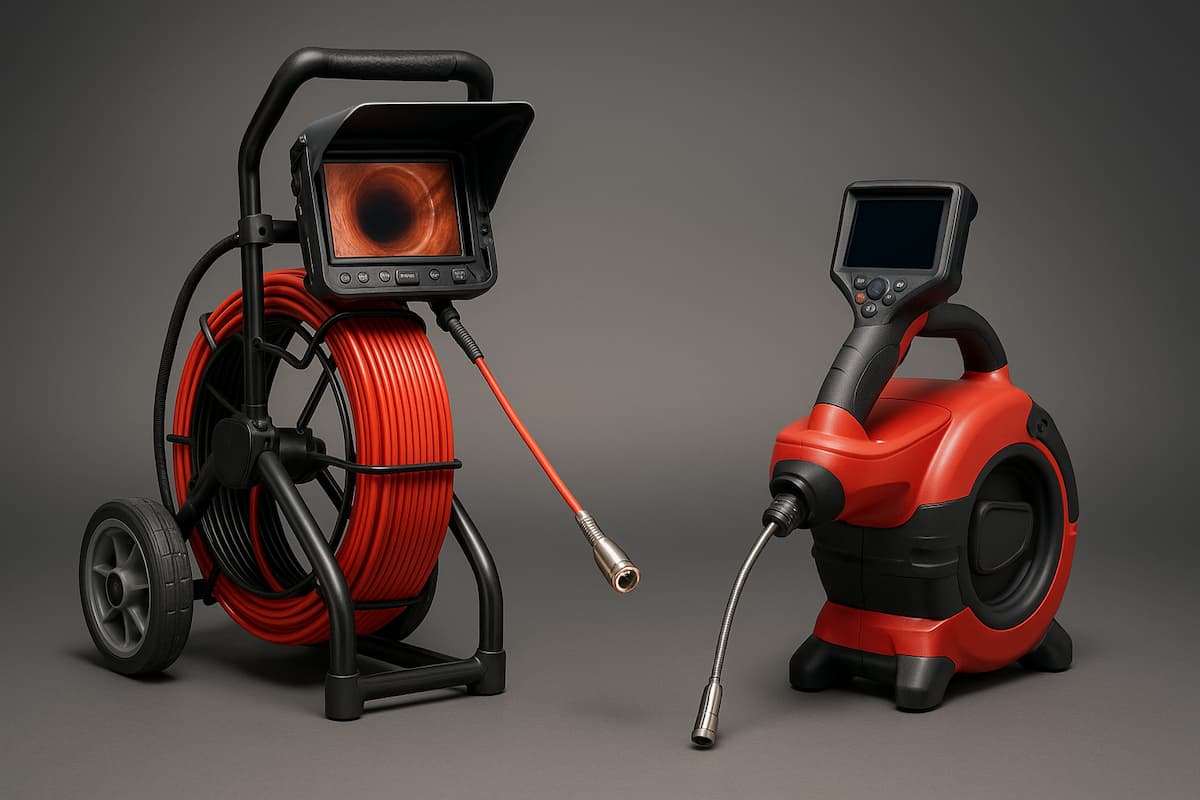In the past, professionals had to rely solely on guesswork or invasive digging to determine what was happening underground. Today, visual inspection systems offer a clear window into plumbing and sewer lines. They help pinpoint blockages, cracks, and structural damage without turning the site into a construction zone. However, when it comes to choosing the right tool for the job, things get a bit more nuanced.
Two of the most common waterproof pipe inspection cameras are push-rod cameras and drain snakes. Both have their strengths, but the right choice often depends on the type of pipe, the location of the issue, and how precise the inspection needs to be. If you work in pipe inspection or are simply curious about the tools behind modern plumbing, this comparison will help you choose the technology that best suits your needs.
Push Rod Cameras
One of the most effective methods people use is push rod video inspection. It’s a smart way to get a close-up look inside residential and commercial sewer lines, drains, or even empty conduits, without having to dig or guess. There are different rod sizes and two types of heads, which let you handle a range of pipe diameters with ease. With a built-in sonde, you can also pinpoint exactly where any issue is underground, so if there’s a blockage or crack, you can mark the location right then and there using paint or flags.

Everything you find is documented clearly, so there’s no second-guessing later. This process gives you a clear understanding of what’s happening inside the pipes, helping you avoid unnecessary excavation or repair work. It’s a practical, efficient solution that’s become a go-to for professional inspections.
Types
When it comes to inspecting pipes, flexibility is key, and these pipe cameras deliver just that. There are two tough, high-res heads: a compact 1-inch for tight bends and a 2-inch self-levelling option for broader pipes. Both are built to handle serious pressure and give us a clear view even in tricky spots.
These heads pair with three different push-rod reels to match the job size:
- Mini reel (35 m) – Perfect for tight indoor spaces and smaller traps;
- Midi reel (122 m) – Great for standard residential and commercial lines;
- Specialist Reel (152 m) – Built for larger storm and sanitary sewer lines.
What are the Benefits of Push Rod Cameras?
One of the biggest perks of using push-rod pipe inspection cameras is that they let you skip the mess and cost of digging. Instead of tearing up concrete or soil to figure out what’s going on underground, you can get a clear view from the inside by simply guiding a small device through the pipe. It’s a quick, clean way to assess the condition of underground lines without disturbing a thing above ground.
What makes this method even more effective is the clarity of the images it delivers. You can spot everything from cracks to clogs with precision, making it easier to figure out exactly what kind of repairs are needed with no guesswork involved. This kind of visual access makes inspections more efficient and helps prevent unnecessary work.
These systems are also incredibly flexible. Whether it’s a narrow household drain or a wide commercial line, they’re built to adapt. That’s what makes them so useful across different industries. Plumbers, builders, municipal crews, and even environmental specialists all rely on them to get a detailed look at what’s happening below the surface.
Drain Snakes
There’s nothing more annoying than watching the water slowly swirl around your bathroom sink, refusing to drain properly. Whether it’s hair, soap scum, or something mysterious that’s made its way down there, a clog can disrupt your daily tasks fast. Luckily, a simple drain snake can make a big difference. It’s a practical tool that gives you control without the need to panic or pick up the phone for a plumber every time water starts backing up.

This type of pipe camera (especially manual or basic handheld ones) is generally marketed more toward homeowners or DIY users. They’re meant to be easy to use, affordable, and effective for clearing common clogs in sinks, showers, and even toilets. If you have a slow drain or mild blockage, you can usually handle it with a drain snake without calling a professional. Plumbers, on the other hand, often use heavier-duty equipment when they need to identify or clear more stubborn or deep-rooted issues, especially in sewer lines or commercial plumbing.
Types
Manual drain snakes are the simplest and most budget-friendly option. They have a long, flexible cable with a spiral tip that you push and twist by hand to break up blockages. These work great for smaller clogs in sinks or showers around the house.
Electric options, sometimes called power augers, have a motor to give you that extra muscle for tougher jobs. They cost more but are perfect when you’re dealing with bigger or more stubborn blockages.
Drum augers are the heavy hitters of the group. With a big drum that holds a thick cable, you crank or power the cable in and out to clear stubborn clogs. These are usually in the hands of professional plumbers because they can be tricky to handle.
How to Use a Drain Snake
Start by removing the drain cover or stopper from your sink or shower. This might need light unscrewing or a slight lift. Then, carefully feed the flexible cable with the inspection camera into the drain opening. If you’re using a manual snake, twist the handle as you push it further down. If you’re using an electric model, let the motor do the work while you guide it in. You’ll probably feel some resistance when the cable hits a bend or the clog itself but keep gently turning and pushing until you break through.
Once the blockage loosens, slowly pull the cable back out, bringing any debris with it. Give the cable a quick clean before throwing the gunk away, then run some water to check if everything is flowing smoothly. If the water is still sluggish, you might need to give it another go. Finally, pop the drain cover back in place, and you’re done!
